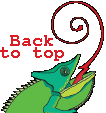Ian Corrigan
 Ian Corrigan
Ian Corrigan has been teaching, learning, singing and playing in the American Neopagan movement since 1976. Beginning by teaching ‘Witchcraft, Magic & the Occult’ for the Kent State University Free School, he has decades of experience in a variety of occult, pagan and magical topics. Having received his 3rd degree initiation in Celtic Traditional Wicca in the early 80s, Ian has led eclectic study groups, a traditional Wiccan coven and a Druid Grove. Beginning with early study of the Western Mystery Tradition, Hermetic Qabalah and the Tarot, Ian has spent over 20 years developing his understanding of Celtic Paganism and the Druid’s way. He became active in Ar nDraiocht Fein in 1990, serving as ADF’s first Chief Liturgist and first elected Vice-Archdruid and as Archdruid for a short time, and is now a fully ordained priest in ADF’s Druidic Order. He is an Elder of Stone Creed Grove, ADF’s oldest congregation, and the primary author and editor of ADF’s Dedicant training program. Ian is the author of The Portal Book: Teachings & Works of Celtic Witchcraft, Sacred Fire, Holy Well: Resources for Celtic Paganism, Grammary, and The Book Of The Dragon: Pagan Ceremonial Magic. He is also a fine singer and performer, as his CD Once Around The Wheel demonstrates. He sings the music of the British Isles, Pagan and magical songs, and things he likes. Along with
Liafal, his partner and priestess, he is part of
Awen, a Pagan folk duet.
Working with the Spirits
While much modern occult theory is based on working with magical 'energies', ancient magic relied heavily on human interaction with the spirits - the Gods, certainly, but also the Dead and various non-human spirits of Land and the Otherworld. The magical arts
contained in the medieval grimoires - manuals of basic magical practice - contain material authentically preserved from pre-Christian times. This sort of magic deals almost exclusively with contacting and employing the spirits in order to work one's will. We will examine the remnants of this ancient art in literate Pagan culture, and extrapolate on how they might apply in a modern Pagan and magical practice.
 Ian Corrigan has been teaching, learning, singing and playing in the American Neopagan movement since 1976. Beginning by teaching ‘Witchcraft, Magic & the Occult’ for the Kent State University Free School, he has decades of experience in a variety of occult, pagan and magical topics. Having received his 3rd degree initiation in Celtic Traditional Wicca in the early 80s, Ian has led eclectic study groups, a traditional Wiccan coven and a Druid Grove. Beginning with early study of the Western Mystery Tradition, Hermetic Qabalah and the Tarot, Ian has spent over 20 years developing his understanding of Celtic Paganism and the Druid’s way. He became active in Ar nDraiocht Fein in 1990, serving as ADF’s first Chief Liturgist and first elected Vice-Archdruid and as Archdruid for a short time, and is now a fully ordained priest in ADF’s Druidic Order. He is an Elder of Stone Creed Grove, ADF’s oldest congregation, and the primary author and editor of ADF’s Dedicant training program. Ian is the author of The Portal Book: Teachings & Works of Celtic Witchcraft, Sacred Fire, Holy Well: Resources for Celtic Paganism, Grammary, and The Book Of The Dragon: Pagan Ceremonial Magic. He is also a fine singer and performer, as his CD Once Around The Wheel demonstrates. He sings the music of the British Isles, Pagan and magical songs, and things he likes. Along with Liafal, his partner and priestess, he is part of Awen, a Pagan folk duet.
Ian Corrigan has been teaching, learning, singing and playing in the American Neopagan movement since 1976. Beginning by teaching ‘Witchcraft, Magic & the Occult’ for the Kent State University Free School, he has decades of experience in a variety of occult, pagan and magical topics. Having received his 3rd degree initiation in Celtic Traditional Wicca in the early 80s, Ian has led eclectic study groups, a traditional Wiccan coven and a Druid Grove. Beginning with early study of the Western Mystery Tradition, Hermetic Qabalah and the Tarot, Ian has spent over 20 years developing his understanding of Celtic Paganism and the Druid’s way. He became active in Ar nDraiocht Fein in 1990, serving as ADF’s first Chief Liturgist and first elected Vice-Archdruid and as Archdruid for a short time, and is now a fully ordained priest in ADF’s Druidic Order. He is an Elder of Stone Creed Grove, ADF’s oldest congregation, and the primary author and editor of ADF’s Dedicant training program. Ian is the author of The Portal Book: Teachings & Works of Celtic Witchcraft, Sacred Fire, Holy Well: Resources for Celtic Paganism, Grammary, and The Book Of The Dragon: Pagan Ceremonial Magic. He is also a fine singer and performer, as his CD Once Around The Wheel demonstrates. He sings the music of the British Isles, Pagan and magical songs, and things he likes. Along with Liafal, his partner and priestess, he is part of Awen, a Pagan folk duet.

